
The Beaver a Canadian Emblem
by Philippe Henry
February 22, 2023

Fig. 001- Beavers select sites to build their dams based on topography and food supply.This lodge is made with branches, trunks of small birch trees and mud and can only be accessed from underwater.
The giant beaver (Castoroides ohioensis) was one of the largest rodents ever to roam the Earth and went extinct about 10,000 years ago, toward the end of the Pleistocene epoch. Today, beavers are still roaming North and South America, Europe and Russia. In France, in 1977, three North American beavers -Castor canadensis- escaped from a private park and reached the Bourdon reservoir in the Yonne department, near Paris. A population developed, reaching a minimum of 15 to 20 individuals in 1984. From the initial site, those beavers started to colonize surrounding swamps and a tributary of the Loire River. Due to the simultaneous presence of Eurasian beavers on the Loire, a decision was made to eradicate the introduced North American beaver population. The non-indigenous individuals were therefore captured. Today no more known C.canadensis populations persist in this region or anywhere else in France. Other populations of C. canadensis, which were introduced into Austria and Poland, appear to be extinct too (Halley & Rosell 2002). The possible presence of North American beavers among the Bavarian population has been hinted at by various authors, although no rigorous proof has ever been published. Today, there is still a significant population of North American beaver in Finland and north-west Russia.

Fig. 002- Beavers are brillant builders. They built dams to create ponds of deep water where they could swim all year around and access their food storage even in winter when there is ice.
If we think about a common point between beavers and men, we could say that it would be the fact of intentionally modifying its natural habitat. But there stops this common point because men very often modify it by destroying it and the beaver can change an ecosystem for a question of survival.

Fig. 003- A view of a lake with a beaver dam submerged in water after a heavy rain.
We immediately recognize a beaver habitat when we see a lodge and a dam of branches and trunks consolidated by mud, which created a pond, a new lake or a floodplain of more or less large area. Of course, this reservoir modifies the natural environment, but it also attracts a diversified fauna.

Fig. 004- Birch tree gnawed by a beaver.
A few years ago, on a beaver pond that had altered a watercourse, I was able to observe and photograph new species of birds such as tree swallows, great blue herons, belted kingfishers, grackles and even mammals like muskrats and otters. The largest rodent in North America is therefore an essential species for maintaining biodiversity. By modifying natural habitats, beavers create opportunities for a variety of plants and animals and have been called a keystone species in temperate and boreal Forest and aquatic ecosystems.
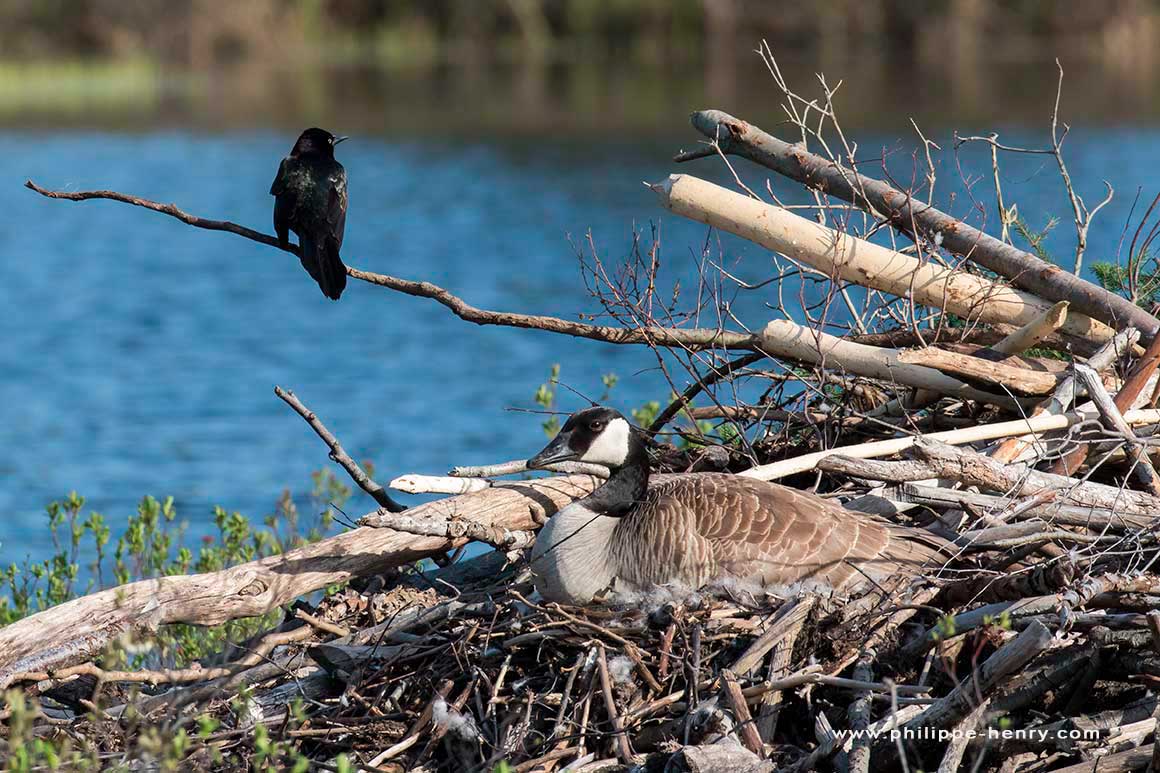
Fig. 005- A Canada goose is nesting over an old beaver lodge.
Despite all this positive side, the activity of beavers may not be totally beneficial for the environment. Aquatic ecosystems are a prominent source of methane (CH4). In the study “Beaver-mediated methane emission” led a few years ago by scientists Whitfield, C.J.Baulch, H.M.Chun, K.P. and al., 2015 it is hypothesized that increasing beaver populations in North America, South America, Europe and Russia, may have an impact on increased methane emissions on the impoundments created by these rodents. Future range extension, and large increase in populations and impacts on freshwater systems, can be expected. Beavers are now recolonizing densely populated, intensely modified, low-relief regions, such as England, the Netherlands, Belgium, and north-west Germany. They will become much more common and widespread there, in coming decades.

Fig. 006 - Beavers are semi-aquatic herbivores. In spring fresh leaves are part of their diet.

007- Beavers often move far from their pond and can cross roads to collect food. They can cause quite a commotion when it is time of heavy traffic.
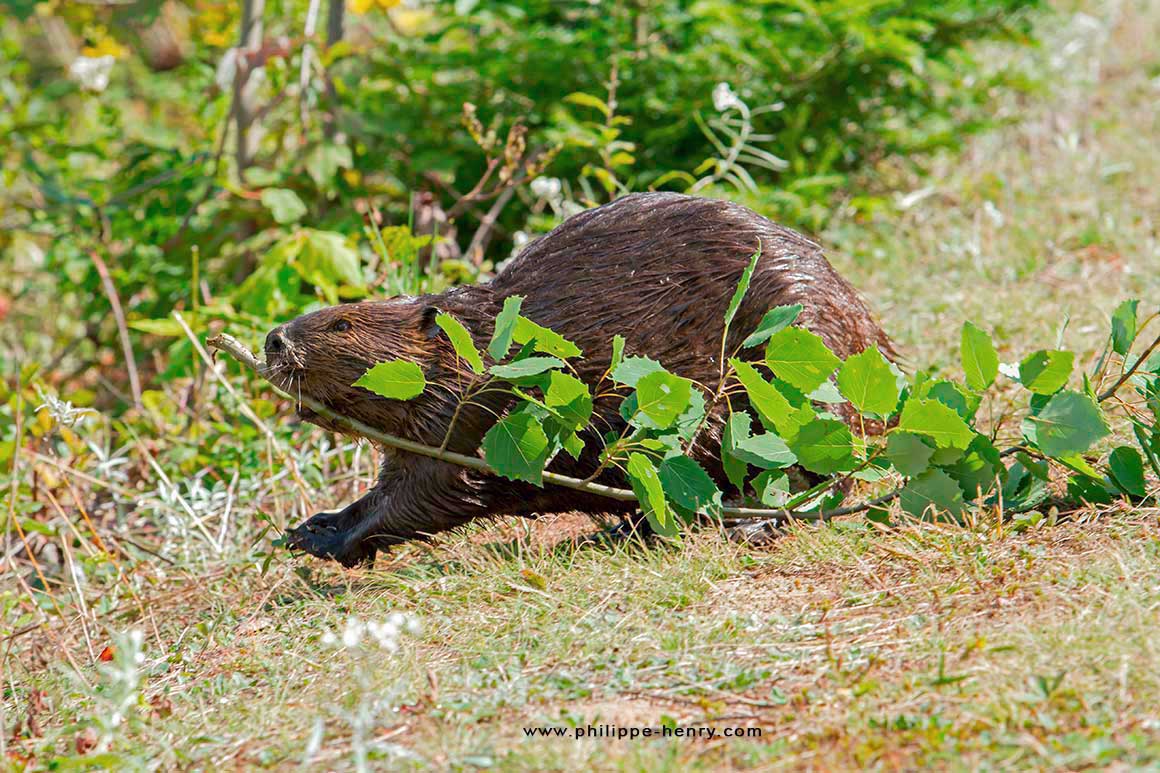
Fig. 008. A happy beaver carrying one of its favorite food: a branch with fresh aspen leaves.

Fig. 009- A beaver returns to its pond where it will store provisions that he could easily reach even in winter under the ice.
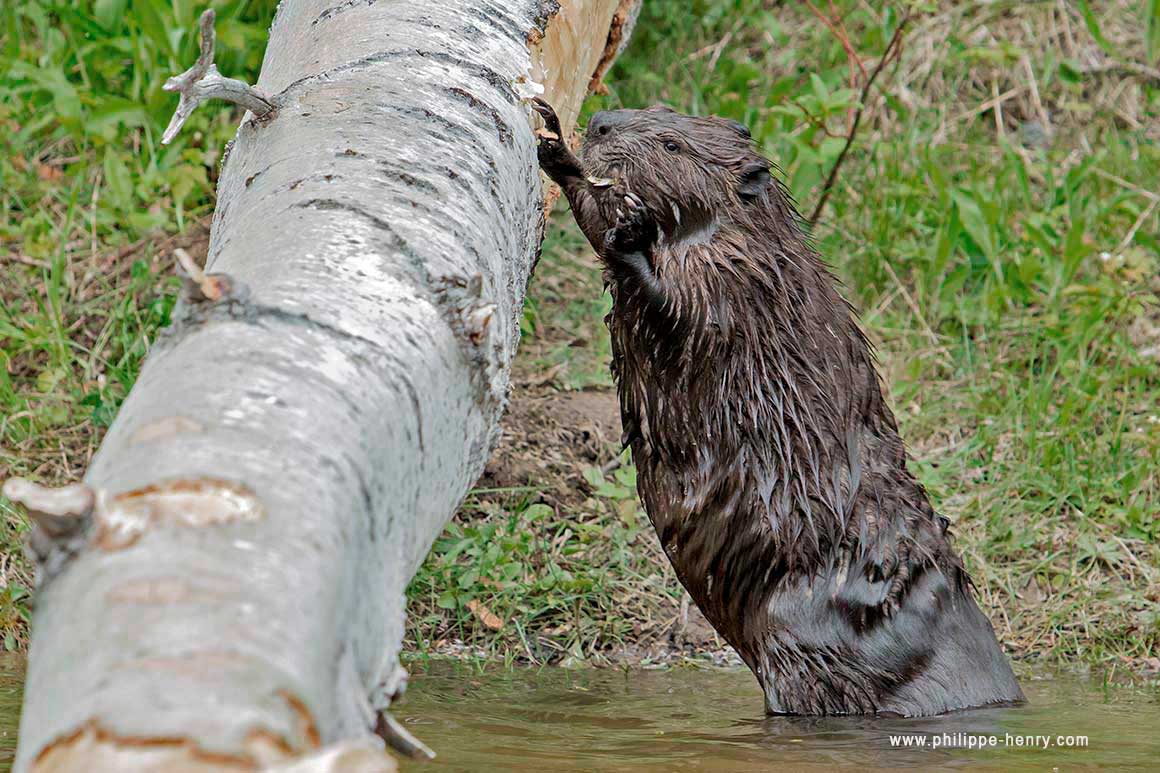
Fig. 010- A beaver gnaws the bark of a huge birch tree.
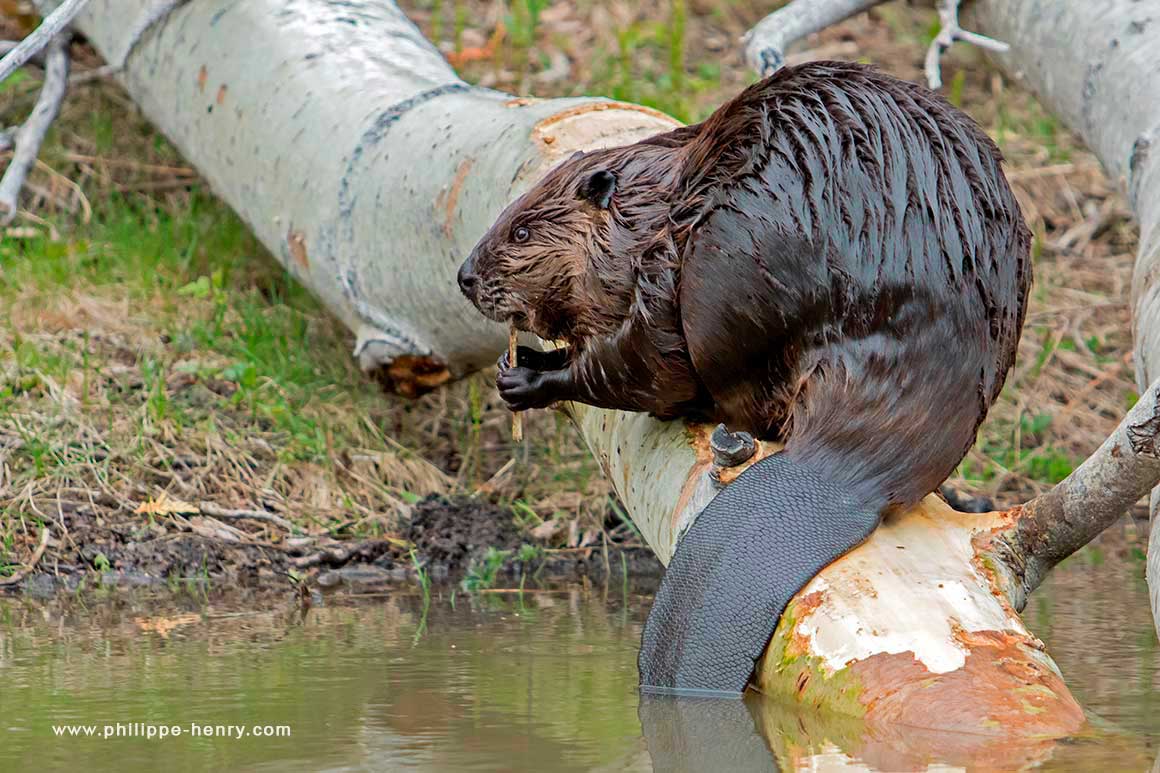
Fig. 011 - In a spot where there is rarely predators, a beaver sits on a birch tree and eats a twig.

Fig. 012- Beavers have rotund bodies and back legs better designed for swimming but, since I saw one running I can say they can be very fast on land.
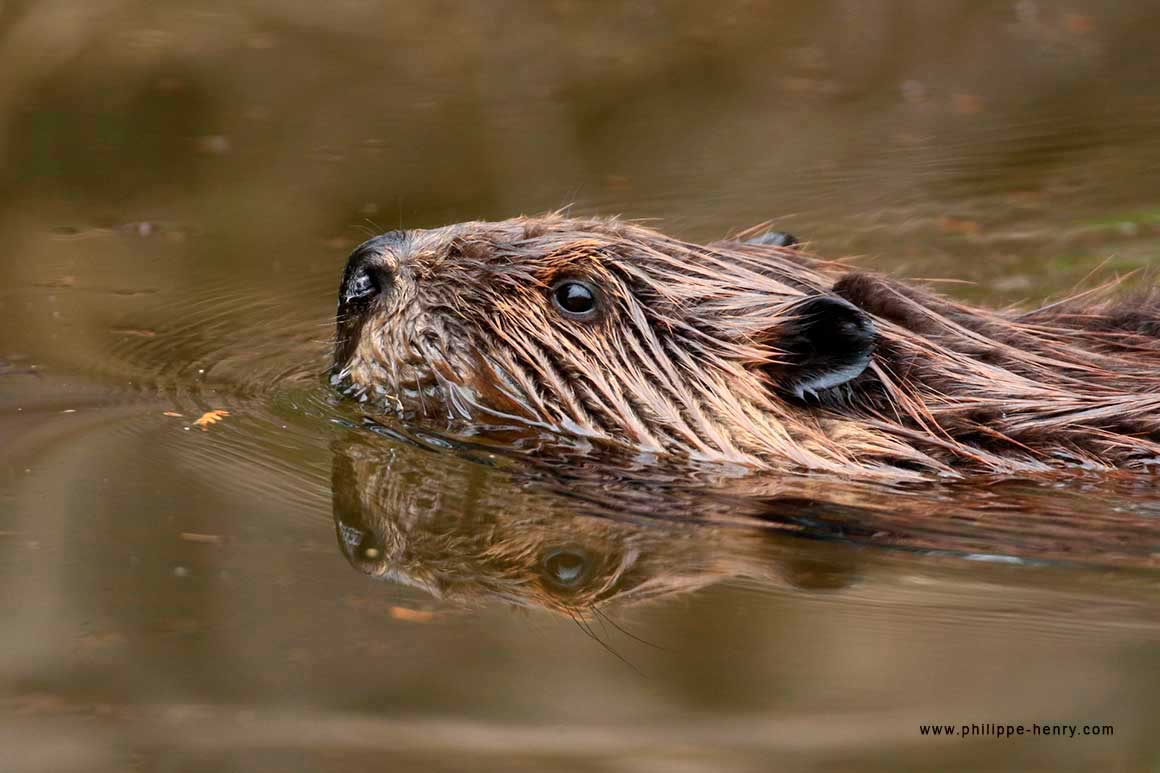
Fig. 013 Beavers have excellent senses of hearing and smell. They can stay on the lookout for a long time when they have detected an unusual smell or sound.

Fig. 014 - otters often live in perfect harmony with beavers. This one warms up under the sun on a warm winter day.
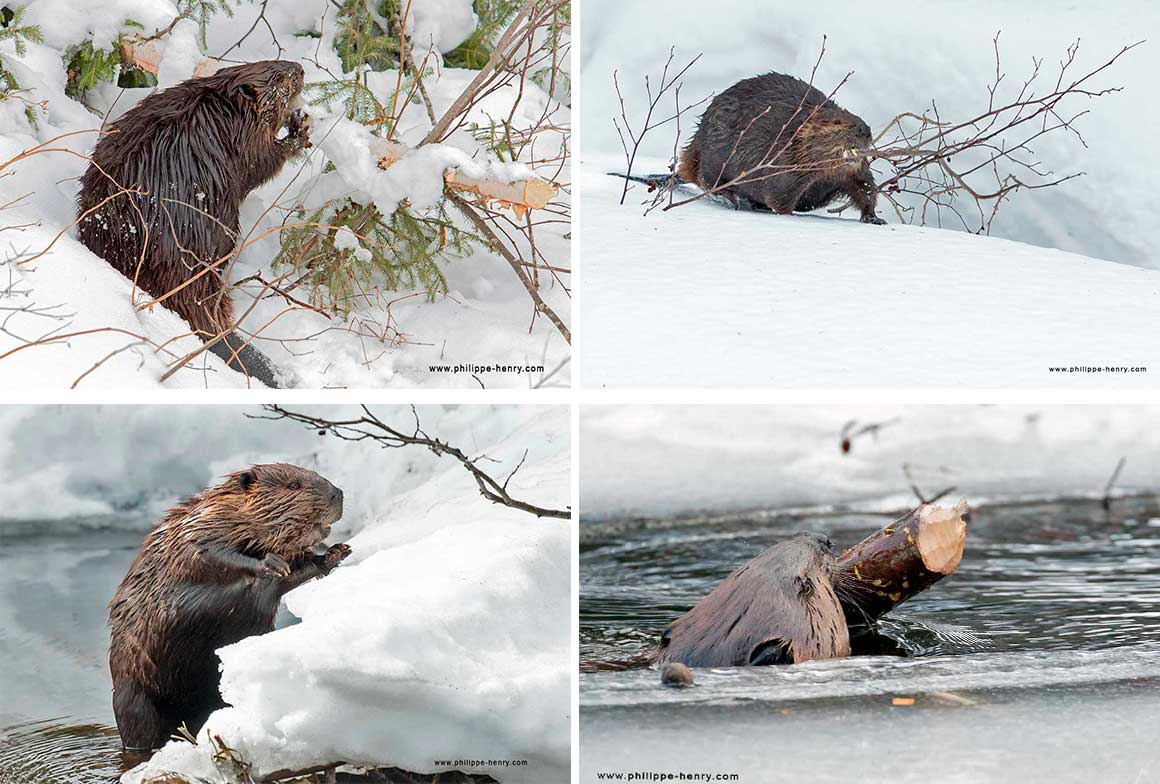
Fig. 015,016,017,018 - Beavers don't hibernate. In winter, they can feed under the ice with food from an underwater cache but they can also move outside the pond to collect more provisions.

Fig. 019. - Beavers can face the intense cold. They have a layer of stiff hairs and underneath a thick layer of fine hairs with tiny hooks that form a tight web that prevents water from penetrating.
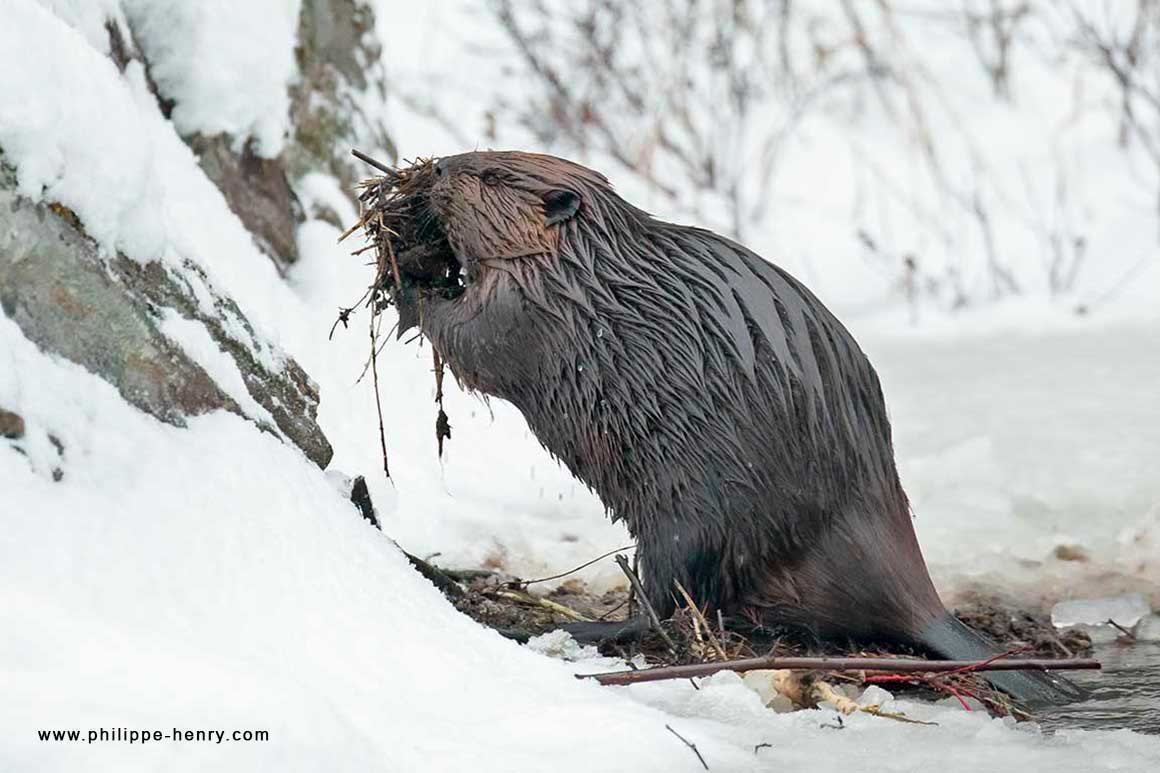
Fig. 021 - The beaver has a tail covered with quails that serves to keep its balance and to support it when it walks on its hind legs while carrying building materials, such as mud, stones or branches, in its front legs

Fig. 022 - A beaver lodge in winter. At the coldest of winter, the lodge material freeze and it becomes difficult for predators to dig through. When snow falls, it provides added insulation, raising the interior temperature slightly.
In the past, Eurasian beaver populations -castor fiber- have been reduced by overhunting. In an article published in 2020 in the “Mammal Review”,the official scientific periodical of The Mammal Society, scientists DJ.Halley, P.Saveljev and F. Rosell wrote that “a century ago, there were 1200 beavers left in scattered refugia from France to Mongolia. Reintroductions and natural spread have since restored the species to large areas of its original range. The minimum estimate is now c. 1.5 million. Range expansion from 2000 to 2020 has been rapid, with large extensions in western and south-central Europe, southern Russia, and west and central Siberia. Beavers are now re-established in all countries of their former European range except for Portugal, Italy, and the southern Balkans. They occur broadly across Siberia to Mongolia, with scattered populations father east. About half of the world population lives in Russia.”
Links to some studies:
Beaver-mediated methane emission: The effects of population growth in Eurasia and the Americas:
https://link.springer.com/article/10.1007/s13280-014-0575-y
Population and distribution of beavers Castor fiber and Castor canadensis in Eurasia:
https://onlinelibrary.wiley.com/doi/full/10.1111/mam.12216
Authors Biography & Contact Information
 Bio: Philippe Henry is a photographer, a writer and a filmmaker specialized in wildlife and conservation. He is based in La Mauricie, in Quebec. He is currently working on a new wildlife documentary which will be available in winter 2023. You can follow his photography on his facebook page. Photo of Philippe by Diane Meilleur
Bio: Philippe Henry is a photographer, a writer and a filmmaker specialized in wildlife and conservation. He is based in La Mauricie, in Quebec. He is currently working on a new wildlife documentary which will be available in winter 2023. You can follow his photography on his facebook page. Photo of Philippe by Diane Meilleur
Email: philippe_henry@hotmail.com
Web site: https://www.philippe-henry.com/
Phone: 1 819 532 1147